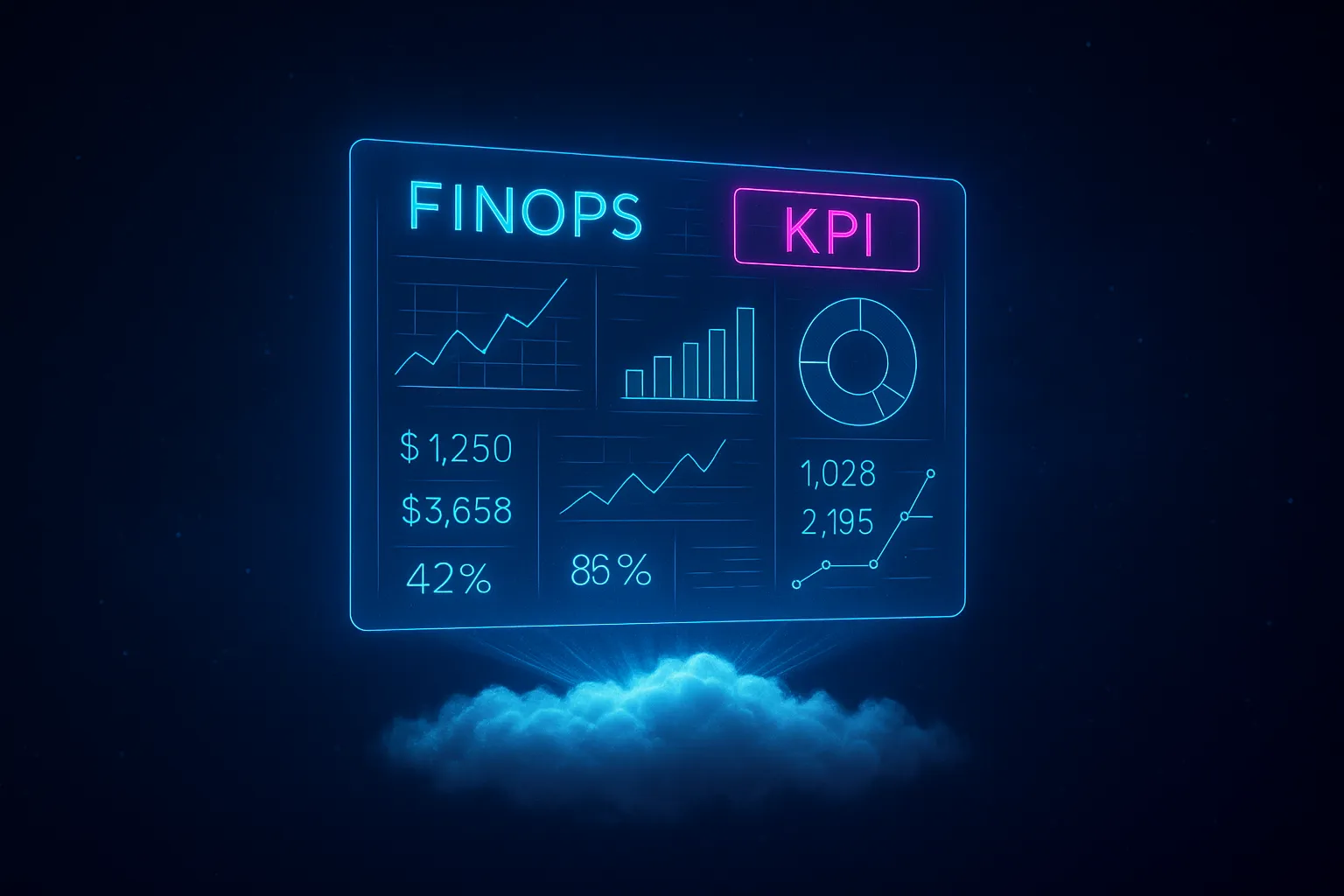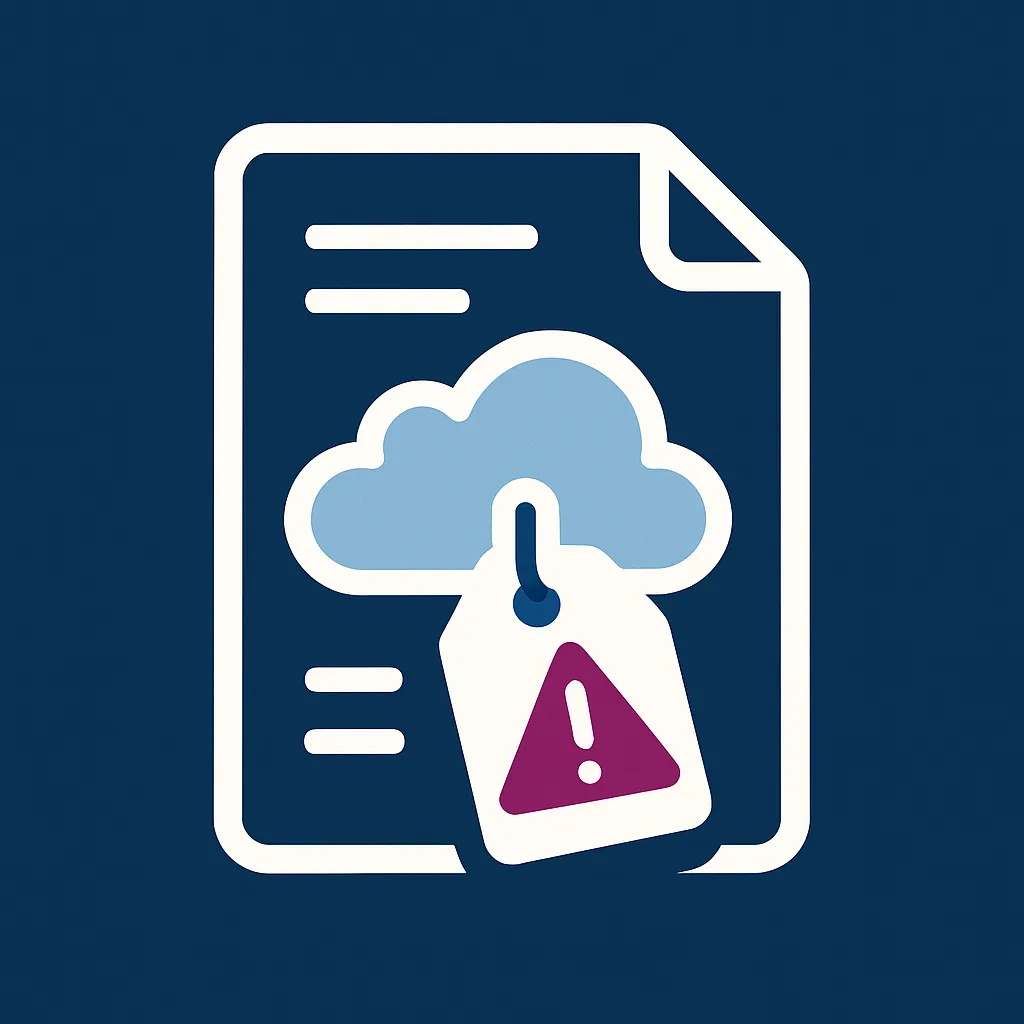Cloud costs feel noisy until you put them in a plan. This post gives you a practical roadmap you can start this month and sustain for the next year. You will get a simple way to pick what matters now, prove results fast, and turn those wins into habits the whole company can run. No new tools required. Just clear goals, named owners, and dates to verify outcomes.
30-Day Roadmap Sprint: Agenda & Artifacts
Key term: Roadmap of Record (RoR) - a one-page plan that lists goals, owners, and verification dates you will use to run cloud cost work.
Most organizations say managing cloud spend is their top cloud challenge. You do not need another dashboard. You need a simple plan the team can follow this month, with clear owners and dates to check results. This unit shows how to build that plan fast and keep it usable for busy leaders.
Think of the RoR as a one-page map. It answers five things: what you aim to achieve, which workloads matter now, who owns each action, when results will be verified, and which risks or deadlines shape the work. Create it in four focused phases across four weeks. No new tools required.
Week 1 - Scope and baseline
Start small on purpose. Pick the 3 highest impact workloads and make them the focus. Gather only what you need:
- Your three KPIs at the portfolio level (e.g., unit cost, % idle compute, spend by service)
- A simple spend view by service or team for those workloads
- Known risks and deadlines that affect timing
Hold one working session to lock scope. End the week with a short list of candidate actions and a named owner for data pulls.
Week 2 - Options and tradeoffs
Put choices on the table and keep them testable. For each workload, list quick wins and longer bets. Note dependencies that could block progress. If you already have tagging guardrails (minimum required tags) or a commitment policy, pull them in so actions line up with reality.
Example: “Right-size API workers after we fix autoscaling policy.” Capture open questions in a short decision log.
Week 3 - Decisions and owners
Turn options into commitments. Every line in the RoR needs a single owner, an expected outcome, and a verification date. Keep wording tight and practical.
Example: “Reduce idle compute in Checkout by 15% by the next billing cycle; owner: Platform lead; verify: cost by service trend shows drop with no latency impact.”
Add a rollback trigger for anything risky. Confirm who will check results and where that note will live.
Week 4 - Sign off and broadcast
Freeze the first version, then make it visible. Share the RoR with product and finance partners and link the decision log so people can see why choices were made. Put the first review on the calendar. Do not wait for perfect data. This document is living and will refresh next month.
What goes in your one-page RoR
- Top goals for the month - two or three plain sentences tied to business outcomes
- Workload focus - the 3 workloads in scope
- Initiatives - each with owner, expected outcome, verification date, and rollback trigger
- Metrics to watch - your three KPIs listed at the top
- Risks and deadlines - one line each
- Comms plan - where updates live and who gets them
Who is in the room
Keep it small: executive sponsor to clear blockers, FinOps lead to run the cadence, platform lead to make changes real, and finance partner to align forecasts. Name them in the RoR so ownership is visible.
Quick start action
Open a blank doc and write the RoR header in less than 5 minutes: “This month we will [goal], focusing on [workloads]. Owners: [names]. Verify on [dates] using [KPIs].” Paste it in your team channel so momentum starts now.
90-Day Wins Portfolio: Decide, Fund, Verify
Key term: Verify note - a short before/after snapshot that shows the result and what you learned.
You build credibility with quick, visible wins. The goal here is a small backlog you can clear fast, prove outcomes, and use to fund the longer work. This is not a laundry list. It is a ranked set of actions with owners, clear acceptance criteria, and a date to check results.
Build a wins backlog
Focus on moves with clean mechanics and low coordination cost. Examples: right-size underused compute, set stop/start schedules for non-production, move cold data to cheaper tiers, remove unattached volumes and stale snapshots, tune commitments where load is stable, and enable basic showback (cost visibility without chargeback) so teams see what they spend. Each item should fit on one line and be easy to verify. These are standard FinOps optimization practices you can start without new tools.
Prioritize what to do now
Rank items by three signals: impact, effort, and time to value. If two items tie, use risk and customer impact as tie-breakers. Keep scoring lightweight.
Ask three things:
- Does this cut waste without risking reliability?
- Does the owner control the change?
- Can we verify inside the next billing cycle?
The top of the list should read like a plan, not a wish: 6 to 10 items you would confidently ship this quarter.
Make verify the default
Every backlog line needs an owner, an expected outcome, and a verification date. Write it so anyone can judge success. Example: Reduce idle compute in Checkout by 10% by next bill; verify using cost by service and latency charts. Add a rollback trigger for anything that could degrade performance. Put the verification date on the calendar the moment you approve the item. No verify, no start.
Funding without friction
Use three simple paths so approvals do not stall momentum:
- No-regrets tickets - rightsizing, schedules, cleanup. Approve in the same meeting you prioritize.
- Budget-neutral swaps - trade a low-value task for a higher-impact win with the same team.
- Commitment tune-ups - expand or shift coverage only when utilization is healthy and the product lead accepts the lock-in window.
Keep finance close but lightweight: track expected impact in the backlog and compare to the verify notes at month end.
Keep owners accountable and unblocked
Name a single owner per item. If multiple teams are involved, the owner is the one who pushes it over the line. List dependencies in plain view: policy changes, CI/CD updates, or a platform template that needs a tweak. Your FinOps lead should clear blockers, chase status, and update the decision log. Progress is measured by shipped outcomes, not meetings.
Tell the story as you go
When an item is done, the owner posts a verify note: before/after metric, what changed, and one learning for next time. Keep it to two sentences plus a screenshot. Share it in the same channel every time so leaders and teams see a steady stream of small wins. Over a quarter, these notes become the evidence pack for your executive review.
Short step
Open your backlog and write three top items in the format above. Add owners and verification dates. Share the list and ask for one change per team this week.
Months 4–12 Operating Plan: Crawl > Walk > Run
Key term: Phase gate - a short checklist that proves you are ready to move to the next stage.
Rather than hunting for perfection, aim for a clear path that turns quick wins into habits the whole company can run. Use a simple loop teams already know: make costs visible and owned, turn insights into actions, and keep value on track as normal work. That rhythm mirrors the standard FinOps phases and anchors this 9-month plan.
Crawl - stabilize the basics
Lock a base so later work sticks:
- Tag or label coverage at 85%+ on in-scope workloads
- Named owners for top cost drivers and a weekly review that ends with one decision
- A short decision log people actually read
- Fix data hygiene first if access or accuracy is shaky
Crawl ends when teams can see and discuss spend in the tools they already use.
Walk - bake cost into how work ships (Months 4–8)
Shift from one-offs to standard practice:
- Add cost questions to design reviews and bake defaults into platform templates
- Define one unit-cost KPI for a flagship product and show it in the dashboard leaders already watch
- Write a light commitment policy with scope, approval path, and utilization targets; track renewals on a shared calendar
- Stand up anomaly alerts with a short on-call playbook so someone owns the first look and the first rollback
Treat each change like product work - small tickets, clear owners, verification dates.
Run - make efficiency automatic (Months 9–12)
Raise the bar and automate the obvious:
- Cost becomes a non-functional requirement next to reliability and performance
- Policy in code where it helps: idle shutdowns, rightsizing nudges, budget alerts that open tickets
- Track commitment coverage and utilization like a portfolio, not a one-time purchase
- Quarterly roadmap refresh so goals, risks, and bets stay current
Provide a golden path for engineers - templates and reference services with tagging, autoscaling, and monitoring done right.
The operating calendar
Keep cadence light and predictable:
- A monthly 10-minute executive review focused on what changed, what we learned, and what we will stop or start;
- Product-level reviews that check unit cost and the top two actions per team;
- A monthly commitments pass to scan coverage, utilization, and the renewal calendar;
- A quarterly roadmap refresh to re-rank the backlog and reset verification dates.
The point is steady decisions tied to real outcomes, not ceremony.
Phase gates - how you know you can advance
Crawl → Walk: tag coverage ≥85% on scoped workloads, owners named for top drivers, weekly review held for two cycles with decisions logged, and at least five verified wins without reliability issues.
Walk → Run: cost questions live in the design template, one product has a unit-cost KPI in active use, a commitment policy is enforced with utilization tracked, anomaly alerts route to on-call with a tested rollback, renewal calendar current.
Common blockers and quick fixes
- Tags drift: enforce in CI/CD and add a lint step to platform templates
- Fear of commitments: start small and review utilization in the same meeting every month
- Unit cost feels fuzzy: pick one product and one metric, write the formula in plain words, use it for a quarter
Outcome you can print: a 12-month milestone view with gates, a two-line operating calendar, and three named bets that make efficiency the default.
Targets That Stick: Goals, Evidence, Review Rhythm
Key term: Unit cost - the cost per business outcome like per order, per active user, or per GB processed.
Targets die when they are vague. They live when tied to business value and a simple cadence that keeps owners honest. Treat cost as a design choice to avoid month-end surprise. The AWS Well-Architected Cost Optimization pillar calls for measuring efficiency, analyzing spend, and making cost a day-one concern. Use that stance to shape the goals and the meeting rhythm below.
Set goals that matter
Pick three targets that map to outcomes, rather than vanity numbers. Use plain language so anyone can judge success. Good patterns:
- Waste cut - “Reduce idle compute in Checkout by 15% without latency impact.”
- Coverage - “Raise commitment coverage on steady services to a safe threshold with healthy utilization.”
- Unit cost - “Hold cost per order inside an agreed band as traffic grows.”
Write one sentence per target that names the owner, the signal you will watch, and when you will verify it. Avoid ranges you cannot measure or goals that depend on six other teams. Targets should be testable inside a billing cycle and visible in the dashboards people already open.
Build the evidence pack
Evidence keeps debate short and decisions fast. For each target, keep a tiny folder with:
- A before snapshot and the same after view
- The small change you made and where it lives (PR, ticket, template)
- One learning that will change how you do the next fix
Make verify notes the default. Each note is two sentences and a screenshot. Keep them in one channel so leaders see a steady stream of small, real wins.
Run the 10-minute executive review
Don’t focus on slides, the point is making decisions. Use this flow:
- What changed - one minute on wins, misses, and surprises
- What we learned - one minute per owner with a verify note
- What we will stop or start - confirm the next two actions
- Exceptions - anything that risks customer impact or budget
- Commitments check - coverage, utilization, and upcoming renewals
Use a simple traffic light rule: green means stay the course, amber means adjust, red means stop or escalate. End with a clear decision log that names owners and dates.
Scorecard that fits on one page
Keep it scannable:
- Top 3 targets with owners
- KPI snapshot for allocation, forecast accuracy, and commitment coverage
- One unit cost chart for a flagship product
- Two active actions with verification dates
- Risk note and the next commitment window
If a chart or metric does not drive a decision, drop it.
Quick action
In under 10 minutes, draft three targets in this format: “Owner will [verb] [what] in [scope] to achieve [business outcome] by [date], measured by [signal].” Add each to your scorecard and schedule the first 10-minute review.
You now have a complete path from first draft to steady operation: a one-page roadmap, a focused wins backlog, clear phase gates, and a review rhythm that keeps decisions tied to outcomes. Keep it small, visible, and testable. When you verify results in public and refresh the plan on a regular beat, cloud costs stop drifting and start compounding into speed and margin.





